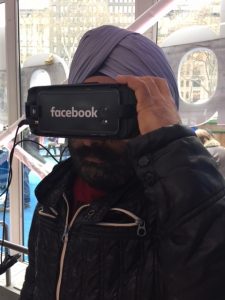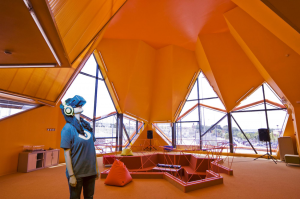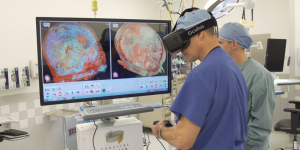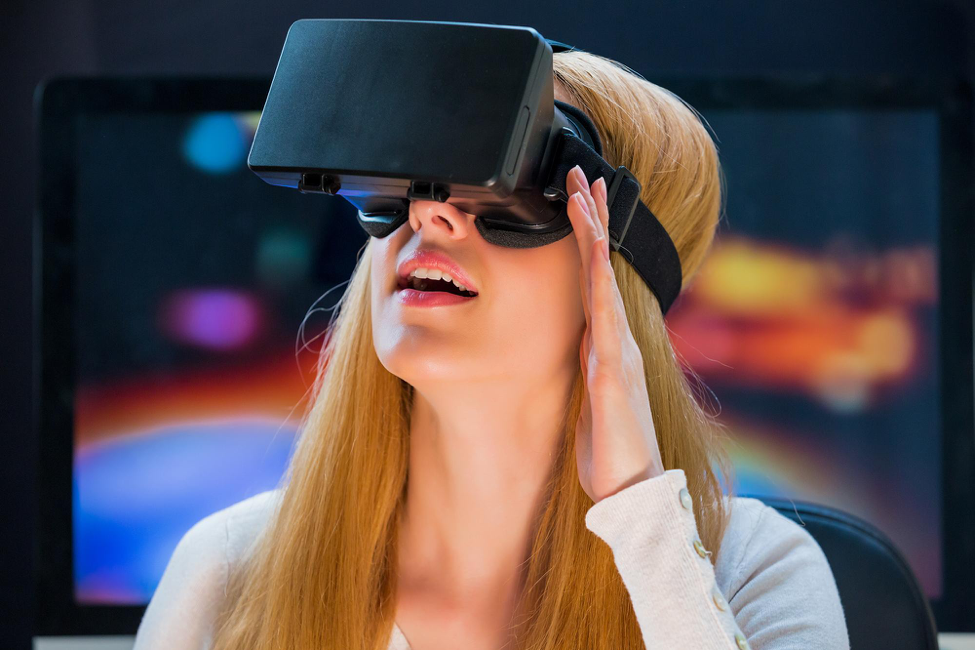 Maybe you will be surprised to find out that Virtual Reality technology isn’t reserved only for the gaming industry. Even now, it is used for multiple purposes. This is simply because the VR technology is limitless. With the right hardware and software, a person can be transferred to whatever alternate reality plane to have fun, study, practice, create, analyze, etc. Knowing this, it doesn’t strike us as a surprise to see big names entering the VR industry in the last couple of years. Some of them are Facebook, Google and Samsung.
Maybe you will be surprised to find out that Virtual Reality technology isn’t reserved only for the gaming industry. Even now, it is used for multiple purposes. This is simply because the VR technology is limitless. With the right hardware and software, a person can be transferred to whatever alternate reality plane to have fun, study, practice, create, analyze, etc. Knowing this, it doesn’t strike us as a surprise to see big names entering the VR industry in the last couple of years. Some of them are Facebook, Google and Samsung.
Virtual reality and augmented reality have a bright future in front of them. They both have revolutionized the current industry standards and this process is not over yet. With this in mind, we are looking forward to see how VR will continue to change the world as we know it. Here are just some of the examples of VR implementation in the future to keep you on your toes.
Virtual Traveling
There are many travel agencies and companies that are trying to use the advantages of VR technology to attract more travelers to the destinations they are offering. These virtual tours are enabled by VR technology. The idea of using VR for this purpose was born back in 2009 when a New York based bootstrap company, YouVisit was founded.

They came to an idea to create a library of virtual tours for VR users. By doing this, their primary intention was to create a VR sensation that will completely immerse the user into the location, and they have covered many destinations so far. They have videos ranging from Harvard University to Machu Picchu available for a complete VR tour. To provide real feel to VR travelers, YouVisit uses camera rigs (4, 7, 14 cams) that record 4K videos at 60fps.
As you can see, VR can be used not just for games or virtual spaces, but for reproductions of real ones too. In the future, we can expect to see many traveling agencies offering virtual tours for their customers in order to give them a firsthand experience of the destination before they decide to visit it. But what’s more important is that YouVisit is one of the pioneers in this field, showing us that VR can be used for some truly creative purposes.
VR in Marketing
It seems that the marketing industry was ready for some new form of marketing. And this is exactly what VR has brought to the table. It has proven to be a very efficient way to attract more customers to products. With a VR marketing strategy, companies can get better results in terms of generating leads and increasing conversion rates, without having to invest large sums of money.
Do you remember what Volvo did when they advertised their XC90 SUV? They introduced the virtual reality test drive that took the driver through the countryside, while in the driver’s seat of a luxury vehicle at full throttle. Is there a better way to help the customer decide if the product is really worth the dollar value?
There is one more case of using VR for marketing purposes worth mentioning. Back in 2014, the London Fashion Week offered interested parties an opportunity to immerse themselves in the full raw experience of being in the front rows, something otherwise reserved for a limited number of people. London Fashion Week organizers were the first ones to use the VR Oculus Rift headset for such an event and they have shown others what VR is truly capable of.
VR in Architecture and Design
From what we can now see on the market, VR is slowly becoming the central tool used not only for presenting the projects, but in determining how they will be designed. This is really important because the decision making process involves many stakeholder s who want to make sure that their time and money was invested in something worthwhile. VR is the only technology on the market that can allow them to immerse themselves in a virtual presentation of a building they are planning to invest in.
s who want to make sure that their time and money was invested in something worthwhile. VR is the only technology on the market that can allow them to immerse themselves in a virtual presentation of a building they are planning to invest in.
With 3D and VR technology, it is much easier for architects and designers to convey an idea and show why they have gone for particular solutions instead of other available options. The easier it is to communicate ideas with the clients, the easier it is to strike a deal.
Besides, rapid development of VR hardware and software made it possible to get an entire set for a reasonable price, allowing architectural and design firms to get that competitive edge, powered by the latest technologies.
VR in Medicine and Healthcare
It doesn’t surprise us to find out that VR found its purpose in medicine and healthcare too. Besides, the uses of this technology continually developing as the VR hardware and software develop. Currently, VR has found use in treatment, diagnosing and training. Let’s see how medical professionals use VR.
 Kids with autism do not develop social skills very well. Professors at the University of Texas, Dallas have created an application to help these kids to improve their social skills. Kids are exposed to social situations such as blind dates and job interviews.
Kids with autism do not develop social skills very well. Professors at the University of Texas, Dallas have created an application to help these kids to improve their social skills. Kids are exposed to social situations such as blind dates and job interviews.
While in VR kids have to focus on reading social cues and on expressing socially acceptable behavior. While they are in VR, doctors use brain imaging and brain wave monitoring to see the effects of the training on the area of the brain tied to social understanding. VR is also used for anxiety treatment, brain damage assessment, and rehabilitation, phantom limb syndrome, etc.
Beside this, 3D modeling is used for surgical training. Experts working at Stanford University have designed surgical simulator which uses 3D models for real-time training. This stands as valuable groundwork that can bring VR and surgery closer.
As you can see, VR has amazing potential. It can be used in countless scenarios and for various purposes. Keep in mind that the ones mentioned in this article are just some of the available options. If you have found this topic interesting, you can expand your knowledge by reading news about VR technology and by following authoritative names in the VR industry on social media.



